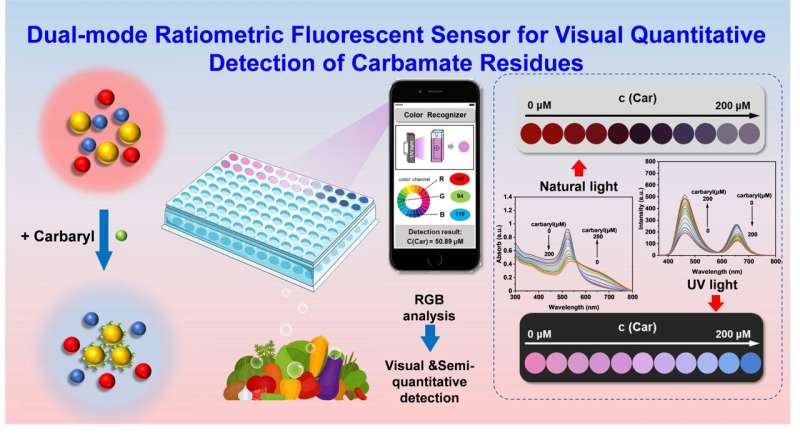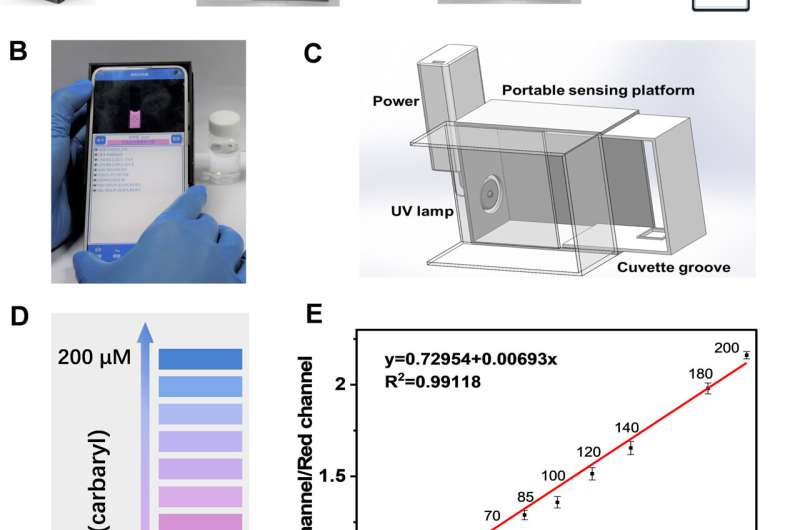This article has been reviewed according to Science X's editorial process and policies. Editors have highlighted the following attributes while ensuring the content's credibility:
fact-checked
trusted source
proofread
New dual mode ratio fluorescence sensing system enables rapid in situ detection of carbaryl residues

A team of researchers led by Prof. Jiang Changlong from Institute of Solid State Physics (ISSP), Hefei Institutes of Physical Science of the Chinese Academy of Sciences has developed a new sensing system for detecting carbaryl residues. The research findings have been published in ACS Sustainable Chemistry & Engineering.
Carbaryl is a widely used insecticide that can easily enter the body through respiratory intake and dermal contact, resulting in serious health hazards, including carcinogenicity and reproductive abnormalities. Therefore, it is crucial to detect carbaryl residues in environmental and food samples. However, existing detection techniques such as surface-enhanced Raman spectroscopy and electrochemical analysis are time-consuming and require complex preprocessing, making them impractical for field testing.
To address this issue, HFIPS researchers developed a dual-mode ratiometric fluorescent probe based on a combination of silicon quantum dots (Si QDs), gold nanoparticles (AuNPs), and cadmium telluride quantum dots (CdTe QDs). This sensing center was capable of visual quantitative detection of carbaryl with high sensitivity and immediate feedback. Upon the addition of carbaryl, the dispersion of AuNPs changed, resulting in a color change of the solution that could be observed by the naked eye.

Additionally, the fluorescence emission intensity of Si QDs increased while that of CdTe QDs decreased due to the fluorescence resonance energy transfer (FRET) effect. The sensing system showed a dual response signal that performed a significant fluorescence color transition from red to blue under UV light. The detection limit (LOD) was as low as 16.3 nM, which was far below the maximum residue standard.
The researchers then designed a portable intelligent sensing platform using 3D printing technology and color recognition, which could successfully apply the sensing system to detect carbaryl in actual samples with good selectivity and anti-interference ability.
This study not only provided an advanced sensing strategy for sensitivity and rapid carbaryl detection in the field but also offered new insights into quantitative analysis of other trace analytes.
Overall, the new sensing system has the potential to contribute significantly to environmental contaminant monitoring and agrifood safety.
More information: Zhong Zhang et al, Ultrasensitive and On-Site Detection of Carbaryl Pesticides via Dual-Mode Nanosensors Utilizing Portable Devices, ACS Sustainable Chemistry & Engineering (2023). DOI: 10.1021/acssuschemeng.2c06499
Provided by Chinese Academy of Sciences




















